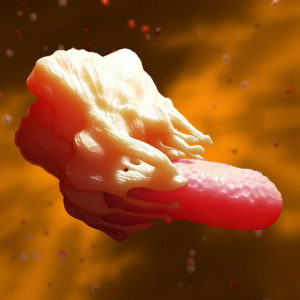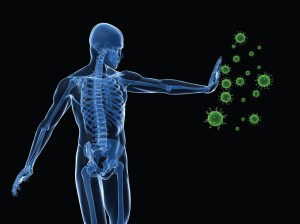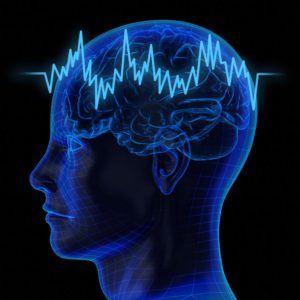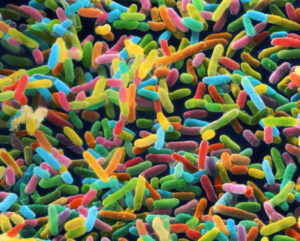Abstract
Immunotherapy targeting the autoimmune process in type 1 diabetes (T1D) can delay the loss of β-cells but needs to have minimal adverse effects to be an adjunct to insulin in the management of T1D. Ustekinumab binds to the shared p40 subunit of interleukin (IL)-12 and IL-23, targeting development of T helper 1 cells and T helper 17 cells (TH1 and TH17 cells) implicated in the pathogenesis of T1D. We conducted a double-blind, randomized controlled trial of ustekinumab in 72 adolescents aged 12–18 years with recent-onset T1D. Treatment was well tolerated with no increase in adverse events. At 12 months, β-cell function, measured by stimulated C-peptide, was 49% higher in the intervention group (P = 0.02), meeting the prespecified primary outcome. Preservation of C-peptide correlated with the reduction of T helper cells co-secreting IL-17A and interferon-γ (TH17.1 cells, P = 0.04) and, in particular, with the reduction in a subset of TH17.1 cells co-expressing IL-2 and granulocyte–macrophage colony-stimulating factor (IL-2+ GM-CSF+ TH17.1 cells, P = 0.04). A significant fall in β-cell-targeted (proinsulin-specific) IL-17A-secreting T cells was also seen (P = 0.0003). Although exploratory, our data suggest a role for an activated subset of TH17.1 cells in T1D that can be targeted with minimal adverse effects to reduce C-peptide loss, which requires confirmation in a larger study. (International Standard Randomised Controlled Trial Number Registry: ISRCTN 14274380).
Main
The autoimmune, T cell-mediated destruction of insulin-producing β-cells causes T1D. In contrast to other autoimmune conditions, where immunomodulatory therapy has been established, the mainstay of T1D treatment for >100 years has been insulin replacement despite a suboptimal effect on glycemic control in many patients, especially in younger individuals1,2. It has been widely established that preservation of even a modest level of endogenous insulin production after clinical diagnosis is associated with reduced short- and long-term complications, providing a strong rationale for targeting immune pathways involved in the pathogenic process3.
The therapeutic landscape for T1D has recently changed with the regulatory approval of teplizumab (an Fc receptor-nonbinding, anti-CD3 monoclonal antibody) to prevent clinical T1D (stage 3) in individuals with preclinical T1D, who already show signs of dysglycemia (stage 2)4,5. Moreover, a growing number of immunotherapies are now being assessed at earlier stages of disease development, including in largely asymptomatic individuals identified on the basis of circulating autoantibodies (stage 1 T1D). Although immunotherapy in the preclinical phases of T1D can delay the need for insulin for a period of years with clear clinical benefit6, balancing risk and benefit is complex. To be appropriate for use at the early stages of disease, therapies should have minimal adverse effects, even with sustained administration, potentially over many years. Interventions that have shown efficacy in β-cell preservation to date include drugs that target large populations of T or B cells7. However, to reduce the long-term adverse effects of generalized immunosuppression, it would be preferrable to selectively target T cell subsets most closely responsible for β-cell destruction.
There has previously been conflicting evidence for the role of CD4 T helper cells producing IL-17 (TH17 cells) in T1D8,9. IL-23 is a key cytokine in the development of TH17 cells and IL23A has been identified as a candidate gene in recent T1D genetic association studies10. In murine models, IL-17 is upregulated in the pancreas and lymph nodes (LNs) early in disease11,12 and transfer of highly purified islet-specific TH17 cells can cause diabetes, although in some cases only after conversion to T helper cells that also secrete interferon-γ (TH17.1 cells) in vivo13,14. In mice, IL-17 could be a marker of pathogenicity rather than the mediator of islet damage because administration of anti-IL-17-blocking antibodies does not protect against disease13,14. In humans, TH17 and TH17.1 cells are upregulated in the blood, pancreas and LNs of individuals with T1D15,16,17,18. There is also evidence for a role for follicular TH cells (TFH cells, expressing CXCR5+ and PD-1+) under the control of IL-21 in T1D. This cell subset is upregulated in mouse pancreas and human blood in the context of T1D16,19,20 and, under the influence of IL-23 or IL-12, can secrete IL-17 along with IL-21 or interferon-γ (IFNγ). In addition, there is evidence that the combination of IFNγ and IL-17 exhibits direct cytokine-mediated killing of β-cells18.
Ustekinumab is a monoclonal antibody that binds the shared p40 subunit of IL-12 and IL-23. These two cytokines play a key role in the development of TH1 (IFNγ-secreting) and TH17 (IL-17 secreting) cells, respectively21. Ustekinumab has been licensed since 2009 for the treatment of psoriasis, psoriatic arthritis and inflammatory bowel disease, including for use in children as young as 12 years for some indications. More than 100,000 patients have been treated with ustekinumab and aggregated safety data from more than 20,000 patients have demonstrated an impressive safety profile, with sepsis rates consistently lower than anti-tumor necrosis factor (TNF) inhibitors, better preservation of vaccine responses22,23,24,25,26 and no increased cancer risk compared with anti-TNF inhibitors27.
A pilot study of ustekinumab in adult patients with newly diagnosed T1D (UST1D1) demonstrated a reduction in TH17.1 cells along with preliminary evidence of probable efficacy at doses used in inflammatory bowel disease28, but it did not have a placebo arm. In the present study, we present the results of a phase 2, multicenter, double-blind, randomized placebo-controlled trial of ustekinumab in children and adolescents within 100 days of diagnosis of T1D (the USTEKID study). We provide evidence for a key role for a small proinflammatory subset of TH17.1 cells in driving β-cell loss and demonstrate that targeting this subset by IL-12/IL-23 inhibition preserves C-peptide levels.
Results
Patient disposition
Of the 262 people who were identified as eligible for the study, we approached 208 and consented 88 participants (Fig. 1). Of these, 13 participants were not eligible for randomization due to negative β-cell autoantibody status (n = 4), incomplete mixed-meal tolerance test (MMTT) resulting from cannulation issues (n = 5), positive tuberculosis (TB) test (n = 1) or COVID-related issues (n = 3). A total of 72 participants were randomized in a 2:1 ratio (in favor of treatment) and allocated to two study arms. Three eligible participants withdrew before the first treatment and were replaced. Four participants withdrew from the trial after randomization (6%). A further four participants withdrew from treatment during the study but attended the primary endpoint assessment (week 52). In total, 68 participants attended the primary endpoint assessment (94%), of whom 64 were on treatment (89%). Six individuals were missing key baseline data required for the primary endpoint. Hence, 62 participants (86%) were included in the primary outcome measure analysis (41 in the ustekinumab group and 21 in the placebo group) (Fig. 1). The study was conducted from December 2018 to September 2022 (recruitment ended in October 2021 and the follow-up period in September 2022), part of which was during the COVID pandemic. Baseline characteristics are shown in Table 1. Study design allowed recruitment of both males and females. Results apply to both sexes. The ustekinumab and placebo groups were comparable in terms of sex, age, body mass index (BMI), ethnicity, baseline C-peptide area under the curve (AUC) and glycated hemoglobin (HbA1c). Participants attended centers with pediatric and adult diabetes teams with expertise in the management of T1D…







